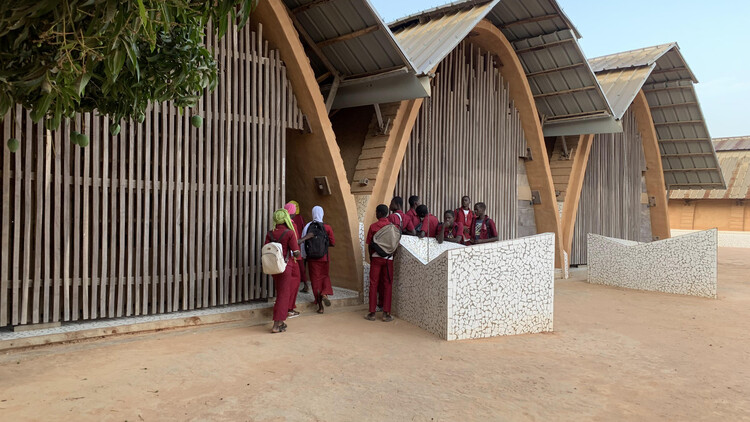 Kamanar Secondary School / Dawoffice / David Garcia, Aina Tugores. Image © Aga Khan Trust for Culture / Amir Anoushfar (photographer)
Kamanar Secondary School / Dawoffice / David Garcia, Aina Tugores. Image © Aga Khan Trust for Culture / Amir Anoushfar (photographer)
Share
Or
https://www.archdaily.com/1035435/building-knowledge-not-just-structures-redefining-the-architects-role-in-times-of-uncertainty
Aristotle is credited with the proverb “One swallow does not make a summer.” In nature, the arrival of these migratory birds often announces the change of seasons, a universal symbol of renewal and hope. Yet it is only when many take flight that the true warmth of summer begins. The same can happen in architecture: an isolated project, however exemplary, rarely changes a reality on its own. When, however, a work teaches, inspires, and can be replicated, it becomes the harbinger of something greater.
Initiatives that combine simple technologies, local materials, and participatory processes show how building can also be an act of learning. Structures and bricks shape places of mutual teaching, where architects and residents share knowledge and build together, multiplying skills and strengthening bonds. These projects point to the possibility of a collective summer, a future in which knowledge spreads as widely as the walls that shelter it.
 Kamanar Secondary School / Dawoffice / David Garcia, Aina Tugores. Image © Aga Khan Trust for Culture / Amir Anoushfar (photographer)
Kamanar Secondary School / Dawoffice / David Garcia, Aina Tugores. Image © Aga Khan Trust for Culture / Amir Anoushfar (photographer)
In a world marked by climate crises, social inequalities, and rapid transformations, the role of the architect is changing. It is no longer centered on delivering iconic buildings but on creating platforms for autonomy, learning, and replicability within a territory. This shift reflects a broader understanding of culture today, where architecture is not only a container for cultural expression but a cultural act in itself, a way of building relationships, knowledge, and collective meaning. Projects that function as “schools of construction” demonstrate how choosing local materials, adopting participatory methods, and empowering communities have become essential strategies for creating architecture that is both meaningful and resilient, capable of sustaining life and culture in uncertain times.
Related Article Designing With Users: 7 Projects Where Architects Collaborated With Communities Replicating Knowledge on a Local Scale
The first aspect of this practice relates to the use of regional materials and adapted techniques that enable the transfer of knowledge to the community. A classic example is the Gando Primary School in Burkina Faso, designed by Diébédo Francis Kéré, where classrooms were built with locally produced compressed earth blocks and community labor. Beyond the physical result, the process left behind a functioning construction workshop, allowing nearby communities to replicate the model, even in a context where building with earth was initially met with skepticism.
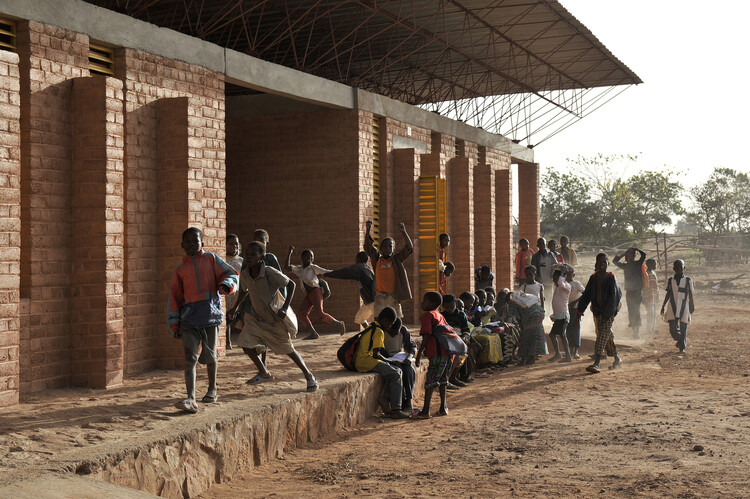 Gando Primary School / Kéré Architecture © Erik Jan Ouwerkerk
Gando Primary School / Kéré Architecture © Erik Jan Ouwerkerk
Another example is the CEM Kamanar Secondary School in Thionck Essyl, Senegal, designed by dawoffice / Foundawtion. The complex was built with locally molded clay blocks arranged in modular vaults that ensure thermal comfort and low cost. More than a construction site, the process became a training ground where masons and young residents learned and refined traditional building techniques. These are architectures deeply rooted in their contexts, seeking not to import foreign models or materials but to strengthen local practices and available resources.
A project that combines both dimensions is the Lanka Learning Center in Seeduwa, Sri Lanka, developed by the collective FEACollective. Designed for an organization focused on early childhood education, the project used local materials such as bamboo, clay bricks, and reclaimed wood, and was built collaboratively by architects, residents, and volunteers. The experience served as a laboratory of mutual learning: while the building was intended for educational activities, its construction itself became an educational process that fostered technical autonomy and a sense of belonging within the community.
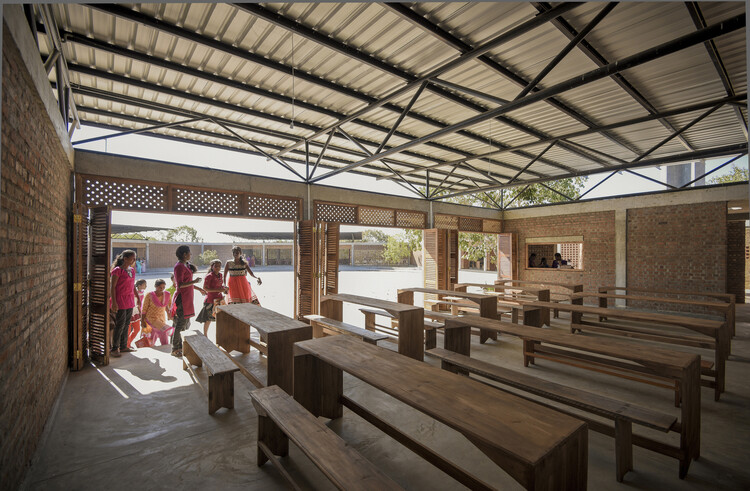 Lanka Learning Center / feat.collective © Barbara Vetter – Vincent HeilandProjects as Catalysts for Community
Lanka Learning Center / feat.collective © Barbara Vetter – Vincent HeilandProjects as Catalysts for Community
In certain contexts, architecture transcends the act of providing shelter and begins to articulate processes of encounter, cooperation, and formation, becoming a true engine of community transformation. In such cases, architects act as mediators between technical and local knowledge, and the building process itself becomes a space for shared learning.
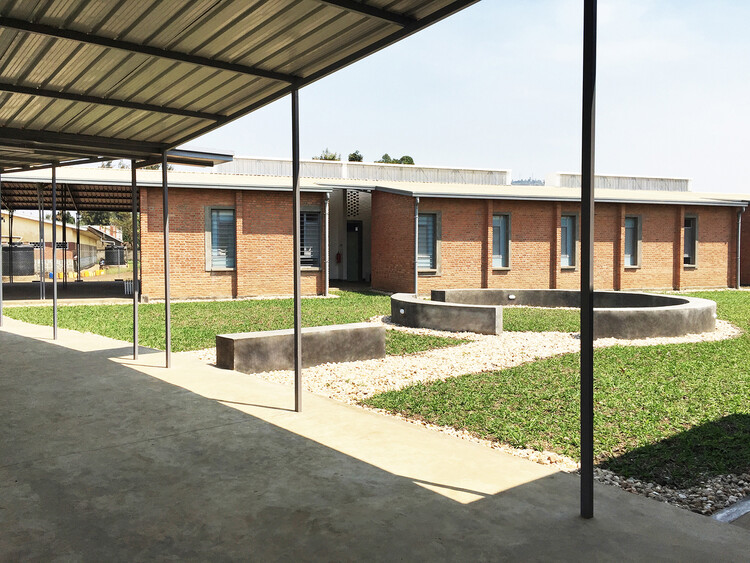 Rugerero Health Center / ASA Studio
Rugerero Health Center / ASA Studio
One example is the Rugerero Health Center in Rwanda, designed by ASA Studio. Developed in partnership with the government and the NGO Rwanda Village Community Promoters, the project emerged from participatory workshops and extensive use of local materials such as adobe bricks and stone, which helped reduce costs and strengthen local autonomy. The construction site became a school of trades, where residents received training in masonry, carpentry, and drainage techniques, laying the groundwork for future community projects in the region.
In Brazil, the work of USINA CTAH offers another example of how participatory processes can foster a sense of belonging and collective empowerment. At the Mutirão União da Juta in São Paulo, families organized in a cooperative actively participated in every stage, from designing the housing blocks to executing the concrete and masonry structures. The result was not only a set of homes but a network of solidarity and technical training that reshaped the very way architecture is practiced.
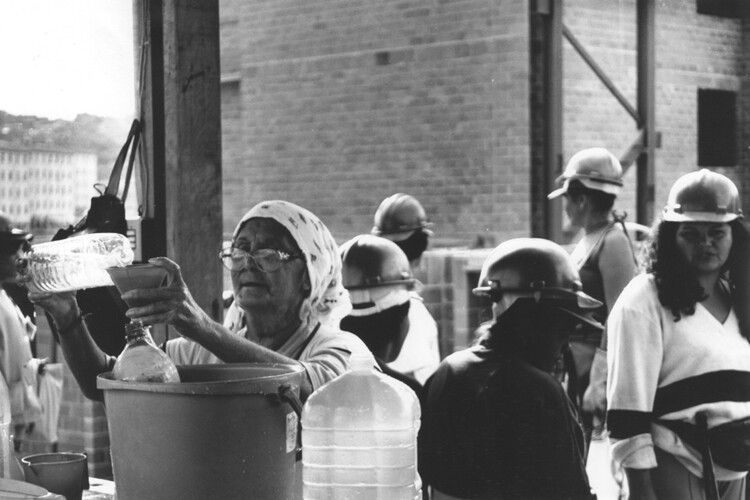 Mutirantes no Centro Comunitário da Juta durante as obras do Mutirão. Image © USINA CTAH
Mutirantes no Centro Comunitário da Juta durante as obras do Mutirão. Image © USINA CTAH
These experiences demonstrate that the value of a project lies not only in the built result but in its ability to shape people, strengthen relationships, and create infrastructures of autonomy. By turning the act of building into a collective practice, architecture ceases to be a product and becomes a continuous process of learning and emancipation.
Relevance Amid Global Crises
Today, architects are called to mediate between different actors, identify local material chains, train workers, and deliver solutions capable of enduring time and scarcity. Projects that function as “schools of construction” are valuable because they spread knowledge, reduce external dependencies, and most importantly, leave a lasting legacy. They show that architecture can be a regenerative practice, capable of shaping not only spaces but people.
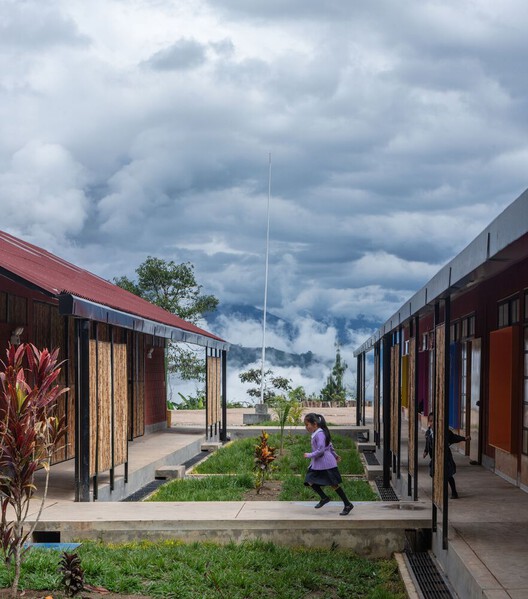 El Huabo Primary and Secondary School / Semillas © © Eleazar Cuadros
El Huabo Primary and Secondary School / Semillas © © Eleazar Cuadros
In Peru, the Asociación Semillas para el Desarrollo Sostenible has developed projects that embody this idea with remarkable clarity. The Primary and Secondary School El Huabo and the Technology and Environment Laboratory Mencoriari were both built in remote Amazonian contexts through participatory workshops that combined vernacular knowledge with sustainable innovation. Using timber from managed forests, modular structures, and passive strategies for ventilation and light, these buildings double as learning environments for students and local builders alike. Each project demonstrates how architecture can strengthen social and environmental resilience by transforming construction into a process of education and shared stewardship.
Challenges remain: engaging real communities requires time, mediation, and language that goes beyond technical jargon. There are tensions between the “ideal” project and the local context, and replicating a method demands documentation, standardization, and adaptation to local variables. Architects must also find balance between being technical specialists and broad facilitators of knowledge. In this age of uncertainty, the architect is no longer merely the author of buildings but a mediator of processes and a cultivator of shared practices. Instead of designing only structures, architects design ways of learning and sustaining. In the end, perhaps the most solid way to build is to cultivate collective knowledge, an architecture that teaches, adapts, and endures.
This article is part of the ArchDaily Topics: The Architecture of Culture Today. Every month, we explore a topic in-depth through articles, interviews, news, and architecture projects. We invite you to learn more about our ArchDaily Topics. And, as always, at ArchDaily we welcome the contributions of our readers; if you want to submit an article or project, contact us.

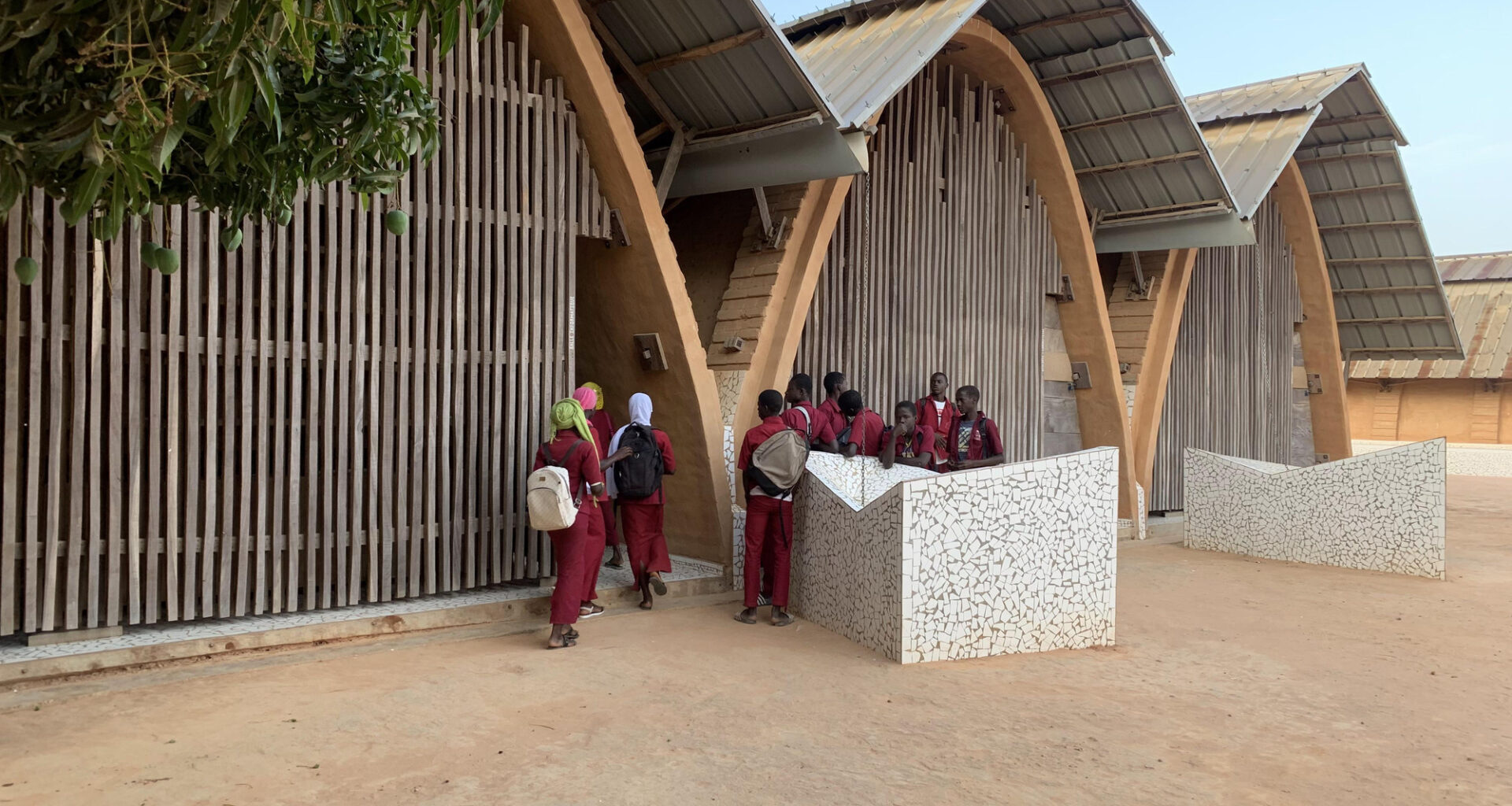
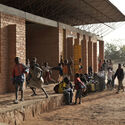
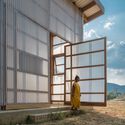
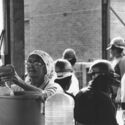
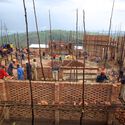
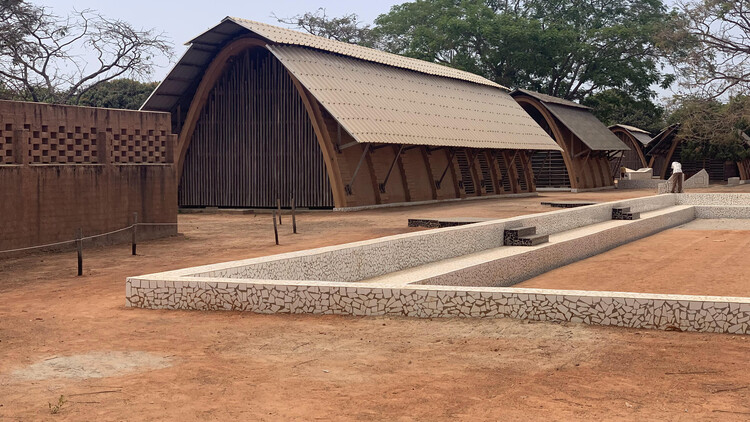 Kamanar Secondary School / Dawoffice / David Garcia, Aina Tugores. Image © Aga Khan Trust for Culture / Amir Anoushfar (photographer)
Kamanar Secondary School / Dawoffice / David Garcia, Aina Tugores. Image © Aga Khan Trust for Culture / Amir Anoushfar (photographer)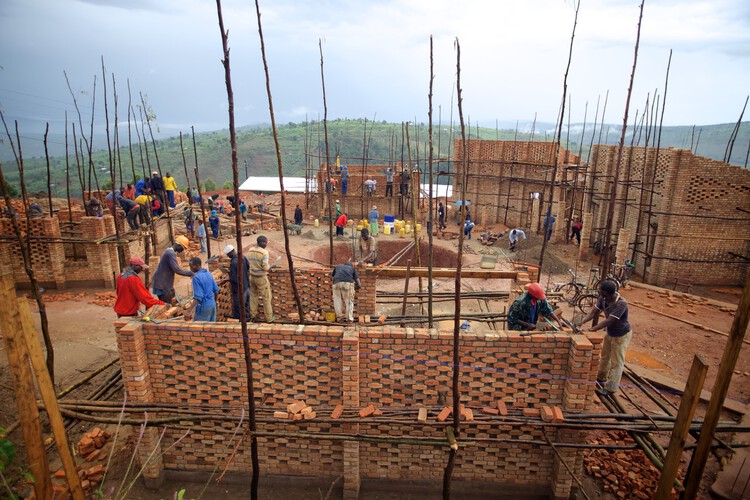 Child and Family Care Centers (Rwanda) / ASA Studio (Active Social Architecture). Courtesy of Josep Ferrando. Image © ASA Studio
Child and Family Care Centers (Rwanda) / ASA Studio (Active Social Architecture). Courtesy of Josep Ferrando. Image © ASA Studio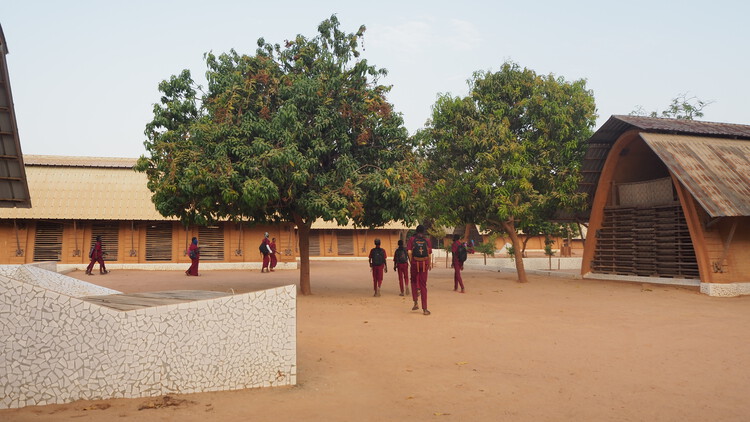 Kamanar Secondary School / Dawoffice / David Garcia, Aina Tugores. Image © Aga Khan Trust for Culture / Amir Anoushfar (photographer)
Kamanar Secondary School / Dawoffice / David Garcia, Aina Tugores. Image © Aga Khan Trust for Culture / Amir Anoushfar (photographer)